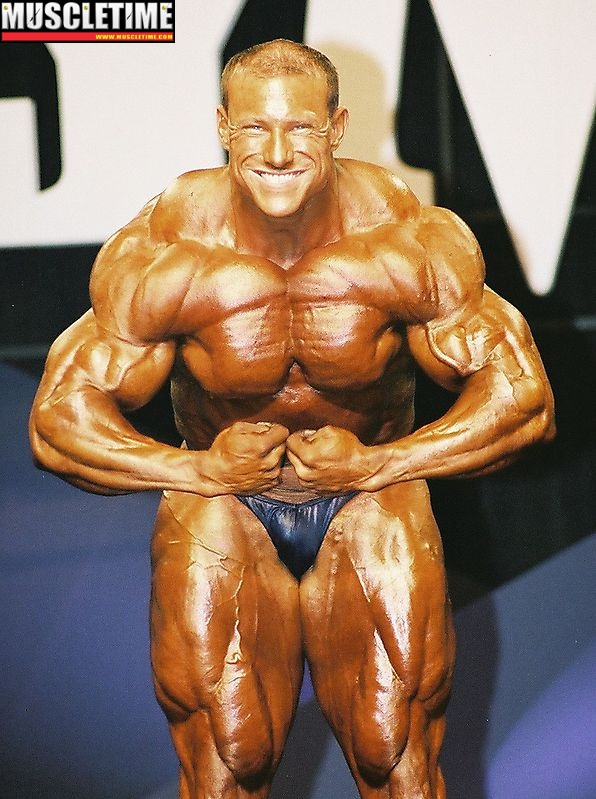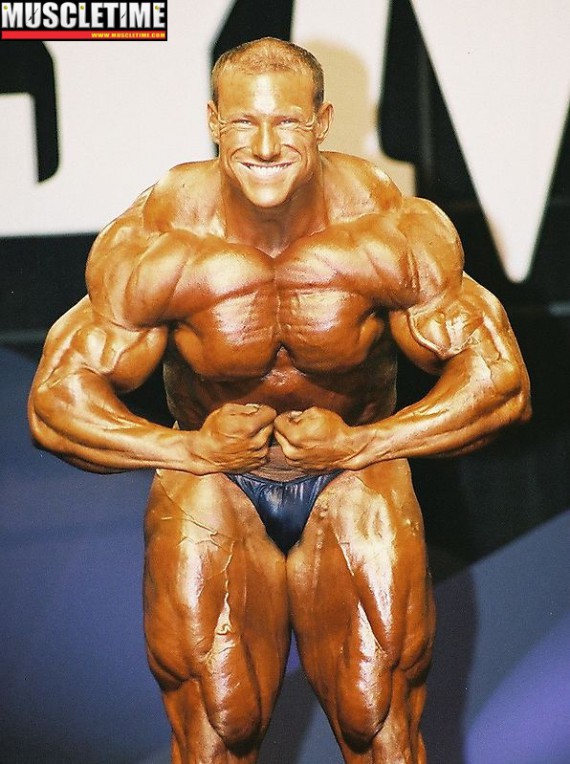
IFBB professional bodybuilder Art Atwood has refuted several of the allegations made by journalist Michael Brick of the New York Times during the Times’ coverage of the federal steroid investigations down in Texas.
A black Hummer pulled into the Hooters parking lot as dusk fell. Arthur Dale Atwood, a professional bodybuilder with a 61-inch chest, opened the tailgate for a police informant to deliver more than 100 bottles of fake drugs made from vegetable oil.
The story implies that Art Atwood was selling and dealing “fake” steroids. Court documents which provide details of the sting operation indicate that federal investigators gave the police informant fake steroids in place of real steroids as part of the Atwood sting operation. “Fake” steroids are often used in sting operations to establish conspiracy and possession with intent to distribute.
Furthermore, the police informant involved in the federal steroid sting operation was Art Atwood’s best friend; Atwood had no reason to suspect he was being sold fake steroids. His best friend had been acquiring steroids from David Jacobs who was distributing legitimate steroids imported from China according to independent sources.
Prosecutors could have tried Atwood and Jacobs on multiple counts of drug conspiracy, seeking to make an example of two bodybuilders suspected of distributing steroids. But instead, they made deals that could keep both men from serving any prison time.
Art has informed MESO-Rx that he had not entered into a plea agreement with federal investigators and the New York Times assertion of such a deal was categorically false. Atwood has not been charged with a crime and it remains to be seen if charges are filed against him for his involvement.
Atwood and Jacobs were enlisted to cooperate in Operation Raw Deal, the federal government’s most aggressive drive yet to interrupt the importation and traffic of performance-enhancing drugs through nutrition stores, gyms and Web sites. In September, authorities in 10 countries coordinated the arrests of more than 120 people, seized more than $6 million and collected 11 million steroid doses, 3 boats and dozens of weapons.
While the Texas investigation is a complex and interconnected case, Atwood explains that his involvement in the case is different from Jacobs; Atwood does not have the same connections e.g. with NFL football players, nor does he have a plea agreement with prosecutors assuring him that he will avoid jail time. The facts involving Atwood’s case are significantly different and will be judged independently, contrary to suggestions by the New York Times of similarities between the Atwood and Jacobs cases. As he told the local CBS affiliate, “David did his own thing; I was my own entity.”
Through the summer, six other people connected to Atwood and Jacobs were arrested and charged with conspiracy to distribute steroids. Most have pleaded guilty to the federal distribution charge. In interviews, investigators and defense lawyers described the six as bodybuilders who were supplied by Atwood and Jacobs and who were familiar with one another partly through competitions and mostly through online sales.
The New York Times implies that six bodybuilders were arrested as the result of Art Atwood’s cooperation with federal investigators. Atwood strongly denies the truth of this allegation; the implication that they were “turning people in left and right” is untrue. Furthermore, none of the six indicted co-conspirators of David Jacobs have accused Atwood as being responsible for their arrests.
While the parties affected by the federal steroid investigation in Texas are restricted by what they can say to the press by legal considerations, the full truth and details of this large scale investigation will become a matter of public record soon – most likely upon sentencing of the parties involved. MESO-Rx tries to provide additional information as it becomes available but the details are incomplete and we should be cautious before we rush to judgment in the absence of all of the facts.

About the author
Millard writes about anabolic steroids and performance enhancing drugs and their use and impact in sport and society. He discusses the medical and non-medical uses of anabolic-androgenic steroids while advocating a harm reduction approach to steroid education.

No replies yet
Loading new replies...
Join the full discussion at the MESO-Rx →